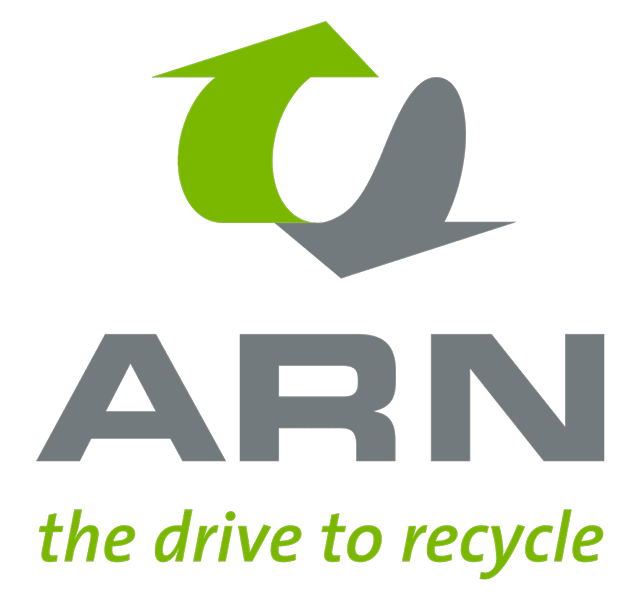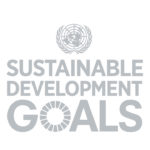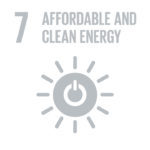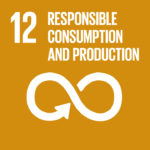What can we expect from the evaluation of the ELV Directive?
Next step: more insight into plastics for better separation

No less than nine per cent of all the plastics produced in Europe are used in car production. Yet the ELV Directive still hasn’t set specific rules for the recycling and reuse of plastic. And this, despite the fact that the circularity we hope to achieve by 2050 calls for stringent and specific targets. Perhaps they’ll be included in the next update of the Directive? ARN-experts Janet Kes and Barend Ubbink look ahead.
Nowadays, a new car typically contains an average of 39 different types of plastic, collectively accounting for between 40 and 50 kilos of the vehicle’s total weight. And the proportion of plastics in cars is expected to increase. “In striving to produce better, more comfortable and lighter – and thus more fuel-efficient – cars, plastics will play an increasingly important role,” insists Barend Ubbink, Quality Assurance expert at ARN. “Yet at the same time, plastic recycling is still in its infancy. At the moment, plastics recycled from vehicles are included in the 95 per cent overall target of the ELV Directive; there are still no specific targets for plastics. If the EU wants to realise its ambitions on plastics, it will need to consider more specific rules for these materials.”
European level
The revised ELV Directive, which is currently under revision, could result in more stringent regulations. And that’s exactly what Ubbink’s colleague, Janet Kes, Manager Batteries and Quality Assurance at ARN, thinks will happen. Both of them expect the overall 95 per cent recycling target for cars to include a specific sub-target for plastics. “What’s more, the high-value reuse of plastics will become increasingly important,” insists Kes. “These are all aspects that should stimulate the market to do more with plastics in cars. At the beginning, during the design phase, and at the end, during recycling and reuse.”
Plastics from end-of-life cars are separated after the shredding process
Barend Ubbink
Ubbink sees some potential in European regulations that focus on the increased use of plastic recyclates in cars. “Those regulations should preferably focus on manufacturers’ suppliers. If they are mandatorily obliged to incorporate a certain percentage of recyclate in their parts, manufacturers can be sure that the plastics they use in cars will consist of a certain percentage of recyclate.”
Clear insight
An item that is high on the agenda of the under-review Directive is a complete and clear understanding of all the different types of plastics. We already have the IDIS system, in which you can learn, for example, per car model that a bumper is made of ABS. But it tells you little about the precise composition, or where exactly each plastic variant is. All this is vital information for targeted separation. “It’s not easy to obtain this information,” says Kes, “the automotive supplier sector comprises several different chains that exchange information with one another and, ultimately, the manufacturers too. And then there’s the question of what you can do with this information at the back end – where materials are processed together quite roughly…”

Mapping plastics
While the total percentage of recovered plastics is currently quite high, its quality leaves much to be desired; in most cases they cannot be reused for the same applications. For high-value or even circular reuse, more is needed.
“Every car marque uses different plastics, material compositions, fire-retardant additives and different construction or installation methods,” offers Ubbink. “To separate them effectively, we need to know what types of plastics they are all made of, where they are located and how they are attached. We are about to start up a project that will map all this out.”
Standardising materials and their applications
The bottom line is that everyone needs to know what the other is doing. “It’s crucial for the various chains to communicate with one another,” agrees Kes. “The trick is to exchange knowledge and ideas so that it can all be processed more easily at the end-of-life cycle.”To that end, and on the initiative of the RIVM, several proponents of the chain – representing producers, suppliers and dismantling and recycling companies – recently got together in a workshop. “Surprisingly, for many of them it was the first time they had met in such a setting,” adds Kes.
It’s crucial for the various chains to communicate with one another. The trick is to exchange knowledge and ideas
Janet Kes
One of the workshop topics was the use of adhesives. By way of example, Ubbink says a producer might use an adhesive that will never release. “Yet it would certainly be in the interests of a recycling company for it to do so – be it for a windscreen or a complex composite containing plastic. An adhesive that releases on exposure to light could make a world of difference. Evidently, the use of standards would be a great help to the various parties in the chain. These should be clearly defined agreements pertaining to product and material use, assembly, dismantling and recycling. Standards would significantly increase recycling rates.”
Follow that car!
Another important precondition that would facilitate the high-value recycling of even more plastics is the better traceability of end-of-life vehicles, the so-called “ELV whereabouts”. This is also a spearhead of the new ELV Directive. Thanks in part to the ARN and RDW system, the Netherlands has good experiences in this field and serves as an example in Europe. “ARN’s success with registration is partly thanks to the RDW’s numberplate registration system, which is one of the best in Europe,” says Kes. “This makes it possible to effectively monitor end-of-life vehicles; we know which car has been deregistered where, and therefore where which waste products can be expected. A good end-of-life vehicle registration system is indispensable for the proper implementation of the ELV Directive.”
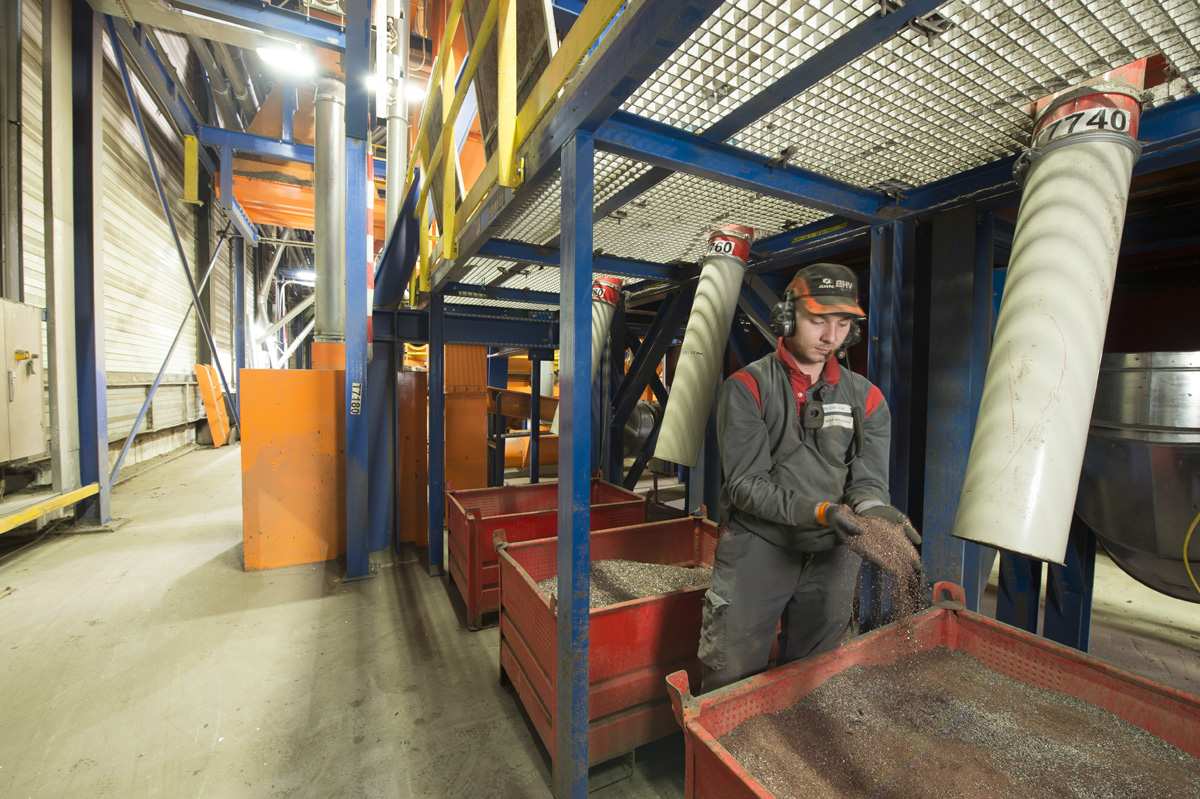
Separate or shred?
The point at which you stop separating and start shredding is also important, says Ubbink. “In theory, the dismantling company could take absolutely everything apart. That might sound good, but it is hugely labour-intensive, and thus very expensive. Since the Post Shredder Technology factory entered the equation, it’s been possible to recycle much more plastic. In the past, we manually harvested an average of seven kilos of relatively clean plastic from a car and the rest went into the furnace. Nowadays we send end-of-life cars to the shredder and recover up to 40 kilos of shredded plastic per car. We recover much more, and more efficiently, but it’s not always of the highest quality. It’s a choice you have to make: do you want to reuse as much percentage weight of plastic as possible, or are you aiming for optimally clean material flows for maximum circularity?”
ARN’s role
ARN is more than pleased to play a key role in the smarter and high-value processing of plastics. “In a technical as well as a technologically sense, more is possible,” insists Ubbink. “The question is whether the right techniques for high-value plastic recycling are already widely available. ARN is continuously on the lookout for new, better techniques, and we champion them if they prove suitable, such as the new technology for separating black plastics, for example.”
In the Netherlands, PST technology is used to process a lot of plastics from cars
Janet Kes
Monitoring, adapting and optimising is what ARN will keep doing enthusiastically in the short term, adds Kes. “Our task is to closely monitor developments. What legislative and regulative changes will the new ELV Directive bring, for example, and which technologies are breaking through? There are many question marks, but at the same time it’s reassuring to know that the cars we will recycle tomorrow are already on the roads today.” Both Kes and Ubbink hope and expect that future regulations and developments will not overly disrupt the chain. Kes: “In the Netherlands we are well prepared, but we realise that stagnation is not an option.”
Sustainable Development Goals
For the fourth year, ARN has measured itself against the benchmarks of the Sustainable Development Goals (SDGs) in the context of being “lean and green”. The SDGs depicted here apply specifically to the content of this page.
Act now for tomorrow’s world
The lofty ambitions in automotive-plastic recycling emanate from the European Commission’s desire to move towards a circular economy. In 2018, EU Commissioner Frans Timmermans introduced a strategy to use less new plastics and ramp up their reuse. The main focus was on single-use plastics, such as polystyrene, cotton swabs and straws, because these cause a lot of visible litter. Effective steps were quickly taken to pluck this so-called low-hanging fruit. But realising ambitions in recycling, or the circularity of automotive plastics, are a long-term affair. Highly complex products are involved and there are major (often conflicting) interests in areas that include safety, weight savings, production costs, comfort and energy consumption/CO2 reduction. “Foresight is of the essence” is the mantra: product improvements implemented by car manufacturers today, will affect dismantling companies in approximately 18 years.
